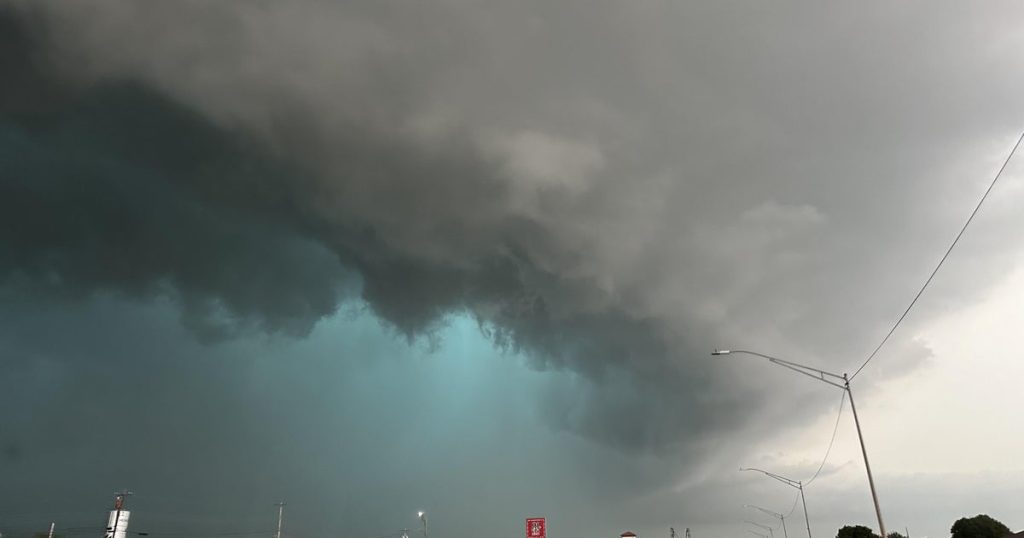As spring unfolds, warmer weather accompanies a higher likelihood of severe weather events, including tornadoes and heavy thunderstorms. Such conditions trigger various weather alerts that warn residents of potential hazards. Understanding the differences between a watch and a warning is crucial for keeping safe during these events, as each alert serves a unique purpose and requires different responses.
| Article Subheadings |
|---|
| 1) Defining Watches and Warnings |
| 2) The Urgency of Weather Alerts |
| 3) The Role of Meteorologists |
| 4) Monitoring Severe Weather Conditions |
| 5) Preparing for Severe Weather |
Defining Watches and Warnings
Understanding the distinction between watches and warnings is fundamental to effectively responding to severe weather threats. A watch is usually issued by the National Oceanic and Atmospheric Administration’s Storm Prediction Center (SPC) several hours in advance of approaching storm systems. It signifies the potential for severe conditions, advising residents to stay aware of evolving weather conditions.
In contrast, a warning signifies an immediate threat to life or property. This alert is issued by local offices of the National Weather Service once severe weather has been confirmed, either through visual confirmation or radar indications. The area affected by a warning is typically much smaller, often confined to specific cities or counties.
The Urgency of Weather Alerts
When a watch is issued, residents are advised to remain updated on weather developments and to prepare for the possibility of severe conditions. The SPC’s watches cover larger areas, often including multiple counties or even regions within states, allowing for broad communication of potential risks.
On the other hand, warnings call for immediate action. For instance, if a tornado warning is issued, it is imperative to take shelter immediately. Residents should seek shelter in the lowest, most interior room of a building, preferably one that has no windows, to minimize risk of injury from flying debris. Warnings demand urgency and immediate compliance to ensure safety.
The Role of Meteorologists
Meteorologists at the NOAA’s Storm Prediction Center play a pivotal role in monitoring severe weather. They utilize sophisticated weather models that allow them to predict storm systems days in advance. By employing a rating system that categorizes thunderstorms on a scale of 1 to 5, they alert the public to varying levels of threat.
A level one is considered a “marginal” threat, indicating the possibility of isolated storms. Conversely, level five signifies a “high” threat, suggesting the potential for widespread damaging winds or a tornado outbreak. This systematic approach helps to communicate the severity of the weather accurately.
Monitoring Severe Weather Conditions
The SPC continuously monitors various atmospheric conditions, analyzing data compiled from multiple sources to generate forecasts. This includes studying moisture levels, cold fronts, and wind speed to predict how weather systems will develop. Meteorologists must look ahead to determine which areas are most likely to experience severe conditions.
Their enhanced capability to analyze data allows for issuing storm outlooks well in advance, sometimes as much as eight days before a storm occurs. The SPC uses maps featuring different colors to indicate areas at risk, providing valuable information that can assist in emergency preparation.
Preparing for Severe Weather
Preparation is essential during the storm season, regardless of whether a watch or warning has been issued. Residents should have emergency plans in place, including designated shelter areas and communication strategies to keep families connected during a storm. Making sure that basic emergencies supplies—such as food, water, and medical supplies—are available can prove beneficial in times of crisis.
It’s also advisable to go through escape routes and familiarize oneself with local emergency services. These preparations do not replace the need for immediate action when a warning is issued; rather, they help ensure that individuals are empowered and ready to act quickly during severe weather events.
| No. | Key Points |
|---|---|
| 1 | A watch alerts residents to potential severe weather conditions and encourages preparedness. |
| 2 | A warning indicates an immediate threat and requires fast action to ensure safety. |
| 3 | Meteorologists utilize advanced models and a rating system to predict severe weather events. |
| 4 | Continuous monitoring of atmospheric conditions is crucial for accurate forecasting. |
| 5 | Effective preparation includes creating emergency plans and having supplies ready. |
Summary
As severe weather becomes more prevalent during spring, understanding the differences between watches and warnings is critical for public safety. Both alerts serve unique roles, with watches preparing individuals for potential dangers and warnings calling for immediate action. The role of meteorologists is vital in predicting severe weather accurately, empowering communities to respond effectively. Through proper preparation and awareness, residents can better protect themselves and their loved ones during adverse weather conditions.
Frequently Asked Questions
Question: How do meteorologists predict severe weather?
Meteorologists use various techniques, including sophisticated weather models and real-time data analysis, to forecast severe weather conditions. These predictions help in issuing watches and warnings accordingly.
Question: What should I do if a tornado warning is issued?
If a tornado warning is issued, you should immediately seek shelter in the lowest level of your home or building, ideally in an interior room without windows, and protect your head and neck.
Question: How can communities prepare for severe weather seasons?
Communities can prepare by establishing emergency plans, ensuring access to necessary supplies, and conducting drills to familiarize residents with safety procedures during severe weather events.


